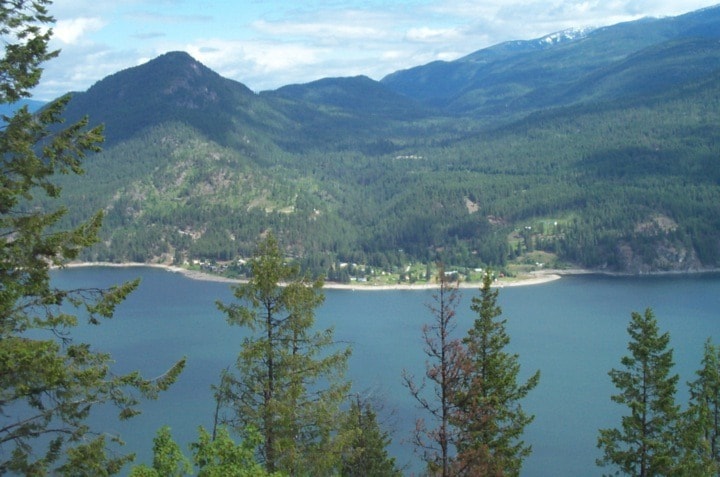Forty-seventh in an alphabetical series on West Kootenay/Boundary place names
There is no mystery how Deer Park, on the east side of Lower Arrow Lake, got its name.
The earliest known mention is in the Donald Truth of August 18, 1888: “[The Despatch] was then steamed down to Deer Park, where a stop of three hours was made. Some of the passengers went ashore to hunt deer, but all returned empty handed.”
In his 1889 Report on a Portion of of the West Kootanie [sic] District, British Columbia, George M. Dawson noted: “The most attractive and park-like portion of this country is commonly named the Deer Park and is frequented by great numbers of deer, when in winter their higher pastures in the mountains become covered with snow.”
If there was any doubt that deer were in abundance, the Winnipeg Commercial in its Kootenay supplement of July 15, 1892 added: “One of the most remarkable landscape views is that afforded by Deer Park, so called from its attractive and park-like appearance and the fact that it is frequented by a great number of deer.”
Kate Johnson in her book Pioneer Days of Nakusp & Arrow Lakes said Deer Park old-timer Fred Hamblin told her that in the spring “when the deer were low down the mountain, the Indians would take a number of dogs to the hills and turn them loose to chase the deer into the lake.”
In the second edition of the book, Johnson said Col. Eugene S. Topping — Trail’s founding father — laid out the Deer Park townsite along with brothers John, Julius, and S.F. Peterson. Topping bought two thousand acres of land and gave a town lot to anyone who would build a house.
Topping and the Petersons did buy 1,800 acres from the CPR for $37,500 in 1896 but the townsite was not actually surveyed until 1907 by F.G. Green.
For decades Deer Park was accessed exclusively by boat. CPR sternwheelers stopped there until the SS Minto was taken out of service in 1954.
Anthropologist Verne Ray recorded an apparent Sinixt place name — plu’me’ — which he stated was a “a temporary camp on the east side of Lower Arrow Lake near the site of the present Deer Park.” However, he provided no translation and ethnographers Randy Bouchard and Dorothy Kennedy didn’t recognize it.
The Deer Park post office operated from 1897-1967, until it was flooded out by construction of the High Arrow dam. The community’s cemetery is now underwater, although a plaque in the Robson cemetery lists 31 people buried there.
Today Deer Park is an isolated community 38 km northwest of Castlegar, accessed by gravel road beyond Syringa Creek Provincial Park, with many summer homes, but only a few full-time residents. It’s still attractive and park-like — in fact a new regional park is being established there.
Previous installments in this series
Applegrove, Appleby, and Appledale revisited
Bakers, Birds, and Bosun Landing
Bannock City, Basin City, and Bear Lake City
Bealby Point (aka Florence Park) revisited
Boswell, Bosworth, Boulder Mill, and Broadwater
Brooklyn, Brouse, and Burnt Flat
Camborne, Cariboo City, and Carrolls Landing
Carmi, Cedar Point, Circle City, and Clark’s Camp
Carson, Carstens, and Cascade City
Christina City and Christian Valley
Cody and Champion Creek revisited
Champion Creek revisited, again
Columbia City, Columbia Gardens, and Columbia Park
